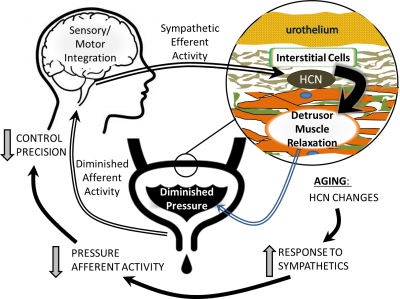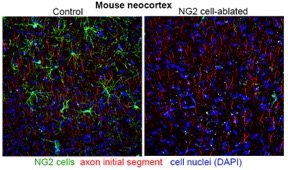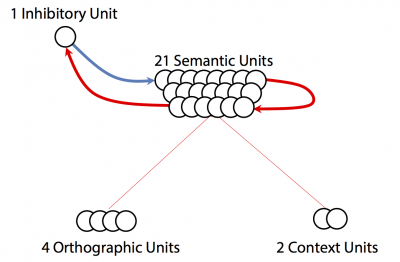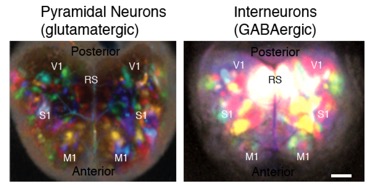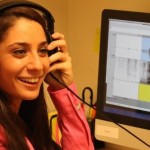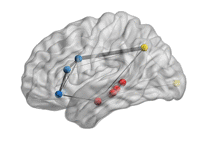FUNDED RESEARCH & RELATED ACTIVITIES
IBACS Seed Grant funds are intended for collaborative research projects across the Brain and Cognitive Sciences. Also considered are: applications for equipment, research workshops, conferences, meetings, visits /visitors that contribute to collaborative activities and other activities compatible with the mission of the Institute. For more information on our Seed Grant program click here.
Molecular and Cell Biology
Lead PI: Michael O'Neill
Title of Project: Transgenerational Epigenetic Effects on Neurodevelopment and Behavior
In collaboration with Dr. Holly Fitch and the Murine Behavioral Neurogenetics Facility we are investigating the transgenerational epigenetic effects on mouse behavior brought on by mutations in the Xlr family of genes on the X chromosome. Abnormal expression of these genes during spermatogenesis alters epigenetic signatures on DNA in sperm that appear to affect neurodevelopment of offspring. This research is relevant to our understanding the male bias in the prevalence of autism spectrum disorder.
Psychological Sciences
Lead PI: James Dixon
Title of Project: Semantic of Collective Behavior
Humans are very good at perceiving the meaning of a group's behavior (e.g., an interested class, a volatile crowd). In team sports, such as soccer, the meaning of group behavior is clear to experienced observers and changes dynamically with the game. This project investigates how social information is carried in human collective behavior by combining state-of-the-art learning algorithms with physical models that rule the dynamics and kinematics of bodies in the domain of soccer.

Psychological Sciences
Lead PI: Caroline Larson
Title of Project: Language-related brain activity project
The goal of this project is to better understand brain activity during language processing in individuals with language impairment. We will examine brain activity via functional magnetic resonance imaging (fMRI) in young adults with language impairment who have versus do not have co-occurring Autism Spectrum Disorder. This work will identify patterns of language-related brain activity associated with language impairment that may be present regardless of co-occurring conditions.

Statistics
Lead PI: Haim Bar
Title of Project: Modeling and visualizing the formation of brain cavities covering from stem cells
We will develop and analyze statistical models for brain cavities (ventricles) covering formation, a process occurring during infancy, in which stem-cells divide and form lining cells. Abnormal ventricle enlargement may be harmful to normal development of the infant’s brain. We will develop software which will show 3D animations of the ventricle’s evolution over time and will be used by neuroscientists and pediatric neurosurgeons to detect abnormal expansion of the forebrain ventricles in a non-invasive manner.

Neuroscience, UCH
Lead PI: David Martinelli
Title of Project: Creation of a novel mouse allele to investigate the role of the C1QL protein in the brain
Our research focuses on the brain-specific protein C1q-like (C1QL) and its involvement in the creation of myelin – a substance required for proper cognition. Loss of myelin, such as what occurs in multiple sclerosis (MS), causes neurodegeneration and cognitive defects. We now also appreciate that adaptive changes in myelin can modulate cognition in healthy brains. Myelin is made by oligodendrocyte cells in the brain, and C1QL is selectively expressed in the oligodendrocyte lineage. We have evidence that C1QL drives oligodendrocyte maturation. Therefore, we hypothesize that modulating the signaling activity of C1QL will cause oligodendrocytes to increase myelin production. This could potentially enhance cognition and perhaps be a novel treatment for MS and other diseases. We hope to initiate a collaborative research program combining the molecular genetics of C1QL, a biophysical analysis, and a behavioral analysis using a mouse model for MS to assay for cognitive decline. We need to determine the subcellular location of the C1QL protein. Grant reviewers have repeatedly insisted on this information as required preliminary data. Thus, we hope to acquire funds to generate a novel mouse allele in which the endogenous C1ql gene locus has been modified to include a small epitope tag. With the creation of this new tool, determination of the subcellular location of the protein is expected to be straightforward, and will fuel two co-PI R01 grant applications. The first with Dr. Stephen Crocker will focus on cellular and behavioral consequences of C1QL activity promoting myelin creation, and the second with Dr. Susanne Ressl will focus on the biophysics and biochemistry of C1QL and its receptors. The allele will be created at UConn’s Center for Mouse Genome Modification.

Psychiatry, UCH
Lead PI: Kevin Manning
Title of Project: Testing Adaptive Interoception in Aging using Bladder Sensations and Simulated Driving
Social bladder control is predicated on interoceptive knowledge of bladder content. Cognitive processes interpret and potentially modulate the sensory neural data stream about bladder volume to optimize homeostasis by resolving external experience with internal expectations1,2. Thus cognitive aging could be one major contributor to disordered urinary perceptions, one that is relatively independent of the actual afferent data stream generated by bladder volumes3. Yet existing research has not directly explored this possibility. Demonstrating the effect of cognitive aging on the ability to maintain normal urinary perceptions would offer a strong translational link to the laboratory-supported hypothesis that the aging bladder must be understood as reflecting a strained but resilient adaptive system that is subject to the influences of cognitive aging. A necessary first step in this line of research is the development of an allostatic cognitive challenge which will be sufficiently sensitive to bladder changes and testable in a safe clinical environment. We will use driving simulation as a cognitive stressor and will manipulate the degree of driving difficulty encountered while recording subject reports of bladder fullness through cystometry. PI Manning has expertise with the use of this driving simulation as a cognitive / allostatic challenge and will supervise this aspect of the testing. PI Smith has expertise with cystometry (both in the laboratory and as director of the clinical UConn Urodynamics Unit). CO-PI Costello has expertise in cognitive aging and statistical analyses. The project will enable us to measure the impact of cognitive aging on perceptual and driving performance resilience, and directly contribute to pilot data for a NIA R-level grant involving the departments of Geriatrics, Psychiatry, and Urology.

Psychological Sciences
Lead PI: Nicole Landi
Title of Project: Decoding dyslexia: decoding the human mind

Anthropology & Psychological Sciences
Lead PI: Dimitris Xygalatas & Alexandra Paxton
Title of Project: Psychosocial effects of virtual social gatherings
The current pandemic has both disrupted and highlighted the importance of human connection. Although virtual forms of interaction have stepped in to fill the gap, the degree to which these interactions are sufficiently good substitutes for in-person interaction remains unknown. This project explores the psychosocial dynamics of participation in virtual gatherings through a combination of psychometric surveys and wearable technology. We will use these tools to study on-line and in-person group yoga sessions by investigating group synchrony and how it relates to outcomes pertaining to social connection and mental health. In addition, the project will serve to develop a paradigm that can be used in other real-life social settings.


Psychological Sciences
Lead PI: Ed Large
Title of Project: Teaching a neural network to dance

Psychological Sciences
Lead PIs: Marie Coppola, Inge-Marie Eigsti & Kristin Walker (photo order)
Title of Project: Adapting the Autism Diagnostic Observation Schedule (ADOS-2) to assess Deaf individuals who use American Sign Language (ASL)
The Autism Diagnosis Observation Schedule (ADOS-2) is the gold standard for identifying autism. No such instrument currently exists for deaf people who use American Sign Language (ASL). Our team, composed of Deaf and hearing researchers and clinicians, will adapt and translate the ADOS-2 to be used with Deaf ASL users. Our results will support an external grant application to validate this instrument and to better understand the impact of language deprivation on autism diagnosis.



Psychological Sciences & Linguistics
Lead PI: Sandra Villata
Title of Project: An empirical investigation of non-categorical, gradient effects in language
Theories of grammar are categorical — sentences are grammatical or ungrammatical. There is a converging set of results, however, revealing that ungrammatical sentences exhibit gradient acceptability. At the empirical level, this project aims to expand the data types to probe gradience; at the theoretical level, it probes fundamental questions concerning the nature of the mind (categorical or gradient?) through the angle of one of the most tractable high-level cognition systems, natural language.
Neuroscience, UCH
Lead PI: Eric Levine
Title of Project: Effects of a common BDNF gene variant in mouse and human neurons
Significant differences in cognitive abilities among humans exist, partly due to genetic variations that may modulate aspects of synaptic plasticity. Of particular interest is a relatively common variant in the gene for BDNF, a brain growth factor that plays a key role in learning and memory. We will explore the effects of this BDNF variant on synaptic signaling in both mouse and human neurons and explore its contribution to the cognitive impairment in Alzheimer's disease.
Speech, Language & Hearing Sciences
Lead PI: Adrian Garcia-Sierra
Title of Project: Interaction between sentence context and bilingualism in sentence processing
We want to know if knowing two languages, and therefore two grammars, facilitates the processing of grammatical errors with respect to the preceding sentence context. By measuring brain activity to study this interaction between languages, we aim to uncover language processing patterns that are unique to bilinguals that can be used to distinguish from those patterns unique to language disorders.

Nursing
Lead PI: Sharon Casavant 
Title of Project: Predicting Neurodevelopmental Outcomes of Preterm Infants Using Genetic Measures
Preterm infants undergo numerous stressful/painful procedures while hospitalized in the Neonatal Intensive Care Unit (NICU) as part of routine lifesaving care. This study examines the genetic changes that occur as a result of these procedures and whether it influences neurodevelopmental outcomes.
Psychological Sciences
Lead PI: James Dixon
Title of Project: Artificial neural network controller for the postural balance of a compliant simulated bot
Postural balance in humans is essentially unstable, thus requiring active and anticipatory compensation from the nervous system that depends on reliable perception. This project presents an artificial neural network that anticipates and controls the state of a simulated bot made of rods and springs by sensing and adjusting the length of the springs. The network can adapt up to a certain point to intrinsic noise and degradation in the quality of the available information.
Genetics & Genome Sciences, UConn Health
 Lead PI: James Li
Lead PI: James Li
Title of Project: Roles of Foxp1 and Foxp2 in the development and function of the cerebellum
The cerebellum is well known for its roles in motor functions. However, emerging evidence suggests that the cerebellum also plays an important role in non-motor functions such as cognition, emotion, and language. This project will evaluate roles of transcription factors Foxp1 and Foxp2 in cerebellar development, and behavioral changes in mice with cerebellum-specific deletion of Foxp1 and Foxp2.
Psychological Sciences
Lead PI: James Magnuson
Title of Project: Interactive activation and the neural basis of spoken language processing
Our team will use neuroimaging to test predictions from two theories of human speech recognition. One, "interactive activation", proposes that word knowledge guides speech perception by sending excitatory top-down feedback from neural regions specialized for words to regions specialized for phonemes. another, "predictive coding", proposes that word regions send inhibitory feedback to phoneme regions. The actual neural organization has implications for language processing in aging. Our results will support an external grant application on aging.

Psychological Sciences
Lead PI: Alexandra Paxton
Title of Project: Dyadic coupling in simulated firefighter search-and-rescue tasks
Firefighters face incredibly complex navigational challenges as they search for victims in low-light conditions, high ambient noise, and unforgiving time constraints. Firefighters generally work in pairs to balance the time pressure of finding victims with care for the firefighters' own safety: If a firefighter is injured, the search for victims must stop until that firefighter is rescued. Under such extreme situational pressures, how do these firefighter dyads become an effective "person-rescuing" system? Studying this important real-world setting provides a unique opportunity to improve firefighting practice and expand the science of interpersonal dynamics. Little is known about how dyads jointly navigate a complex space, especially when their “coupling” is constrained. In this project, we bring together a multidisciplinary team to study how interpersonal coupling shapes the dyad’s effectiveness and evolution as a new system over time by studying both undergraduate dyads and real firefighting teams.
Educational Psychology
 Lead PI: Devin Kearns
Lead PI: Devin Kearns
Title of Project: Neuromodulation for Reading Improvement (NeuRI)
Reading disorder (RD) is a neurodevelopmental disorder that is challenging to remediate through behavioral intervention alone. This project will evaluate whether transcranial direct current stimulation (tDCS)—a safe, non-invasive method of briefly altering brain activity—can increase the efficacy of behavioral reading training. Uniquely, we are using high density tDCS to precisely target reading pathways and test the specificity of tDCS for different aspects of reading.
Physiology & Neurobiology
 Lead PI: Geoffrey Tanner
Lead PI: Geoffrey Tanner
Title of Project: Understanding the molecular and cellular underpinnings of elevated aggression following traumatic brain injury (TBI).
Traumatic brain injury (TBI) is pervasive in contact-sport athletes, military personnel, and accident victims. The genetic and cellular-level links between TBI and subsequent cognitive-behavioral changes such as elevated aggression and learning deficits is not clearly understood. We seek to elucidate these connections using a Drosophila model wherein we apply dietary interventions to improve behavioral abnormalities following TBI. In so doing, we expect further to understand how metabolism may affect neuronal survival and function, and thus, disease outcomes.
Psychological Sciences
 Lead PI: James Chrobak
Lead PI: James Chrobak
Title of Project: Audio synchronization of intrinsic brain oscillations to augment perception and memory.
Perception of speech and other sound sequences depends on the dynamic interplay between a subject’s intrinsic brain oscillations and the time-varying nature of the sensory input. This project uses brain-computer-interface to determine the time-scales for synchronizing brain activity in order to augment perception and memory of dynamic vocalization sequences.
Linguistics
 Lead PI: Corina Goodwin
Lead PI: Corina Goodwin
Title of Project: Developing Alternative Language Assessments for Children with Diverse Language Backgrounds
Children with cochlear implants often hear no language during the first several months or years of their lives. Existing standardized language tests were designed for hearing children exposed to language from birth. Therefore, these tests cannot identify language disorders in children with delayed language exposure. We are adapting assessments originally created by cognitive and developmental psychologists to identify the most appropriate interventions for children with cochlear implants, depending on presence of a language disorder.
UConn Health Center, Neuroscience

Lead PI: Stephen Crocker
Title of Project: Aging and the Effect of Senolytic Treatments on the Aged Central Nervous System
Aging represents the biggest risk factor for developing a neurological disease. Chronological aging is associated with alterations in stress response pathways, cell cycle gene expression and pro-inflammatory factors collectively called cellular senescence. Experimental evidence has demonstrated that elimination of senescent cells (senolysis) promotes tissue rejuvenation in peripheral organs such as the pancreas and heart. Degenerative diseases of the central nervous system (CNS), such as Alzheimer’s disease and multiple sclerosis, have implicated cellular senescence to neuroinflammation, diminished neurological functions and reduced regenerative capacity. However, our preliminary data indicate that senolytics may have a profoundly negative effect on the CNS. Overall the impact of senolytics on the CNS are not known. Funding from this project will determine the optimal markers of cellular senescence in the aged CNS, and evaluate the impact of senolytics on cellular senescence and pathology in the aged CNS. Results from this pilot study are expected to identify and validate senescence biomarkers and the impact of senolytic treatment on CNS pathology and the use of senolytics to target cellular senescence to treat neurological diseases.
Anthropology
 Lead PI: Dimitris Xygalatas
Lead PI: Dimitris Xygalatas
Title of Project: Dynamics of fan’s experience during sports games: A study of Brazilian soccer fans
Sports elicit strong emotions and powerful identities that unite and divide people, but little is known about the psychophysiological dynamics of the interaction between fans, and even less about that between fans and players. This project will explore these dynamics in a real-life setting, using physiological measurements and motion capture technology to study the experience and behavior of Brazilian soccer fans and their relationship to the performance of the game itself.
 Psychological Sciences
Psychological Sciences
Lead PI: Eiling Yee
Title of Project: Using electrical stimulation of the brain to explore how we activate knowledge about concepts.
When searching for a lemon in a fruit basket, its yellowness is more important than its sourness. How do we inhibit this task-irrelevant information? We will apply electrical stimulation to the scalp, over frontal areas of the brain, to explore the claim that such stimulation facilitates neural processing and the ability to inhibit irrelevant information. This project will provide insights into the dynamics of conceptual activation and into how humans adapt to their changing environments.
Speech, Language and Hearing Sciences

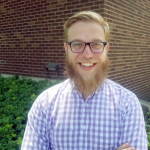
Lead PI: Christopher Heffner
Title of Project: A Working Brain and Cognitive Science Lab in a Science Museum
Most research in the brain and cognitive sciences uses participants who are located near the researcher. However, there is a lot to be gained by going off-campus to conduct research. The present project provides funding for lab space at the Connecticut Science Center. Running participants in a science museum serves two objectives: allowing for the quick recruitment of a diverse group of people and allowing IBACS researchers to share our field with a broad audience.
Psychological Sciences
Lead PI: Holly Fitch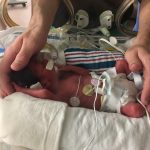
Title of Project: Serum biomarkers and caffeine treatment: prediction and enhancement of long-term cognitive outcomes in a preterm brain-injury model
This IBACS seed-funded study will study an induced neonatal brain injury model in rat pups. This model simulates brain injuries typically seen in premature infants. Serum biomarkers will be obtained from rat pups 48 hrs. after induced injury, and these biomarker levels will be correlated to long-term cognitive and behavioral outcomes on a battery of tasks, as well as post mortem neuropathology measures. Results will be used to assess the predictive value of early biomarkers as a translational screening tool. Serum measures will be assessed and correlated with outcomes in both sham rat pups, hypoxic-ischemic brain injured rat pups, and injured pups treated with caffeine as a putative neuroprotectant. Overall findings will provide the basis for an expanded research plan to study a predictive role for chronic inflammatory factors measured 48 hours after preterm-like injury, as well as a possible mechanistic role for these markers that could provide a target for novel therapies. Data from injured pups treated with caffeine is expected to confirm beneficial long-term effects, and could support future clinical studies of caffeine in preterm infants.
Psychological Sciences
Lead PI: Letitia Naigles
Title of Project: Language and Object Play in Early Childhood in TD children and children with ASD
Our research analyzes a longitudinal dataset of children’s language development (LSEL; Naigles & Fein, 2017), including both neurotypical toddlers and toddlers with Autism Spectrum Disorder, to investigate how object play and language support each other throughout development. To this end, we are developing a moment-to-moment coding scheme that captures the ways in which children's interactions with objects continuously adapt to adult behaviors and investigates the degree to which such interactions predict lexical knowledge and organization.
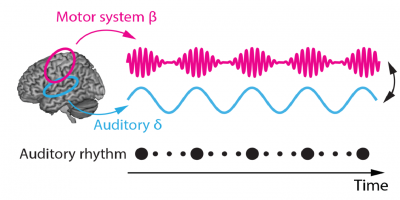
Psychological Sciences
Lead PI: Roeland Hancock
Title of Project: Modeling auditory perception in the individual brain
When you hear a sound, some populations of neurons fire in synchrony, producing an oscillation that we can measure using electroencephalography. This process depends on the chemistry of your brain, which can be measured using an MRI. We are building a computer model of this process in order to predict how individuals respond to certain sounds, based on their neurochemistry. We will also alter neurochemistry using a magnetic stimulator to test the model predictions.

UConn Health Center, Neuroscience
Lead PI: David Martinelli
Title of Project: Discovery of a novel neural mechanism to protect the sensory cells of the cochlea from death caused by intense noise
Normal hearing requires sensory cells in the cochlea, called outer hair cells. They are particularly susceptible to death as a result of intense noise exposure. They cannot regenerate, and their death results in permanent hearing loss. This proposal aims to identify a novel nervous system mechanism that protects outer hair cells from intense sound. This could lead to future experiments that enhance this mechanism to protect the hearing of those susceptible to hearing loss.
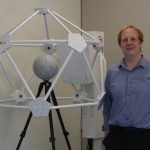
Psychological Sciences
Lead PI: Roeland Hancock
Title of Project: Genetic and Environmental Bases of Language Processing
The overall goal of this research is to determine how the relationship between language and reading-related skills and neurobiology (i.e. brain structure and function) is differentially mediated by genetic and environmental factors in different regions of the brain. We collect data in a novel genetically informed study design from families who have had children through assisted reproductive technology to address this question.


Psychological Sciences
Lead PI: Ed Large, with Co-PI Karl Lerud
Title of Project: Tracking down pitch perception in the human brain
We are investigating the neural correlates of pitch perception. When a complex sound is perceived, two questions can be asked: What is a precise characterization of the brain's response to it, and what determines the perceived pitch? The literature is currently ambiguous regarding whether the perception can be deduced from a measured neural response. We are combining two imaging modalities, structural MRI and EEG, to address these questions. We will record the brain's evoked EEG response to auditory stimuli, called the frequency following response (FFR), using a high-density electrode cap to boost the signal to noise ratio of the FFR. Next, using each individual participant's MRI scan, along with modern signal processing algorithms, we will localize the response to its neural sources. With this newly-detailed picture of the FFR, we will be able to describe the relationship between the brain's auditory signal processing and previously-collected pitch perception data more accurately than has previously been possible.
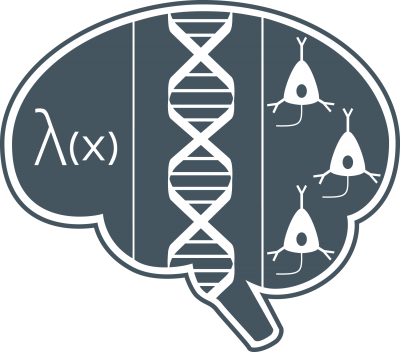
Psychological Sciences
Lead PI: Tehran Davis
Title of Project: Collective behavior in dissipative systems: flocking and fútbol
Our project is a multi-disciplinary effort to understand the origins of structure and behavior in multi-agent collectives. Collective behavior and large-scale group dynamics have become especially hot topics of research in the physical, biological, and cognitive sciences. Recent efforts suggest a physical principle of energy dissipation may be fundamental in driving to coordination of both living and non-living collectives. Here, we work to advance this idea by developing models of collective motion that identify and highlight similarities between the emergent coordination of collections of chemical particles and the emergent coordination of teams of professional soccer players.
 UConn Health Center, Neuroscience
UConn Health Center, Neuroscience
Lead PI: Ephraim Trakhtenberg
Title of Project: The molecular mechanisms of nerve regeneration after injury to the central nervous system.
Dr. Trakhtenberg (lead PI) and Dr. Crocker (co-PI) were awarded a seed grant that will fund an exploratory research project aimed at testing a novel hypothesis regarding why axonal connections, through which neurons in the brain communicate with each other over long distances, do not regenerate after traumatic or stroke injury.
Speech, Language and Hearing Sciences
 Lead PI: Bernard Grela
Lead PI: Bernard Grela
Title of Project: Banana = Monkey or Apple? How Children with Language Impairments Categorize Objects
When placing objects into categories, preschool children organize objects by functional associations (banana with monkey). At around 6 years of age, this changes to organization by similarity (banana with other kinds of fruit). This shift is thought to be influenced by advanced language abilities. Children with language impairments are delayed in language development, therefore, this study intends to determine if their organization of objects is different from their typically developing peers.
Psychological Sciences
 Lead PI: Marie Coppola
Lead PI: Marie Coppola
Title of Project: CEDAR (Community Engagement in Deafness and Autism Research)
Including Deaf individuals as partners in research has advanced our understanding of sign language and Deaf culture; however, tensions remain between the Deaf community and researchers. Similar issues arise in the domain of autism spectrum disorder (ASD). Are ASD and Deafness medical conditions in need of medical solutions (e.g., a cochlear implant, behavioral therapy), or cultural identities? This IBaCS Seed Grant will support a workshop aimed at promoting dialogue among stakeholders and researchers.
Neuroscience
Lead PI: Mason Yeh
Title of Project: Development of a 3D culture model of human cortical development
The goal of this project is to develop a three-dimensional cell culture system for growing cerebral organoids (sometimes referred to as “mini-brains”) from human induced pluripotent stem cells (iPSCs). The human iPSC lines are derived from peripheral tissue or blood samples from individual subjects. Our long-term goal is to use this culture system to study molecular and cellular pathophysiology underlying autism and related neurodevelopmental disorders, with the hope of identifying novel targets for therapeutic intervention.
Psychological Sciences

Lead PI: James Dixon
Title of Project: Non-Equilibrium Thermodynamics of Learning in Dissipative Networks
Learning remains one of the core mysteries in cognitive science. Why do living systems learn? And how could learning be instantiated in such different ways across so many different types of creatures? We propose to investigate the hypothesis that learning is actually the result of thermodynamic law expressed across the complex (and varied) media of living things. We plan to develop physical, analog networks that self-organize their own connections (and perhaps even their own nodes). These systems exhibit very complex behavior, but also have tractable thermodynamics. Thus, we can evaluate and manipulate key thermodynamic variables as the system behaves and learns. The project has implications for grounding a theory of adaptive behavior in thermodynamic principles.
UConn Health Center, Pediatrics
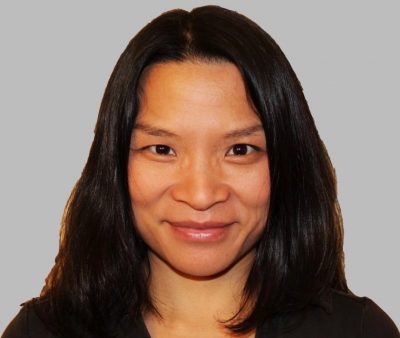 Lead PI: Min Tang-Schomer
Lead PI: Min Tang-Schomer
Title of Project: Grow and control a human neuronal circuit in a dish
Neuronal networks constantly adapt to changing inputs during learning and memory. Network dynamics is extremely challenging to study with human or animals. Our lab has developed a neuronal circuit of cultured neurons with external electric control. We will introduce to the bioengineered circuit human patient-derived neurons and computational network analysis. We aim to forge a functional human neuronal circuit as a testbed for the next generation of neuromodulation prostheses and brain disorder therapies.
Physiology & Neurobiology
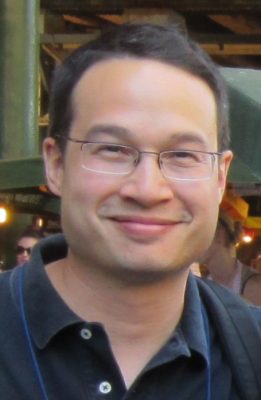 Lead PI: Alexander Jackson
Lead PI: Alexander Jackson
Title of Project: Defining hypothalamic cells and circuits that orchestrate behavior
The lateral hypothalamus (LHA) is a linchpin in the coordination of many aspects of behavior and cognitive function, including arousal, attention, stress and reward. Disruption of neural circuits in this region is associated with disorders of sleep, feeding and motivated behavior, which profoundly affect our well-being and mental health. We propose to use new and informative cellular and molecular techniques to dissect the cells and circuits in the LHA that help to shape these behaviors.
Psychological Sciences
Lead PI: Inge-Marie Eigst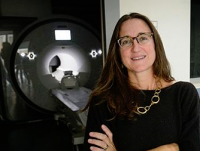 i
i
Title of Project: Brain functions in individuals with an optimal outcome from autism spectrum disorder
In prior work, we showed that some individuals show clear Autism Spectrum Disorder prior to age 5, but later lose all symptoms; they seem to use unique brain networks to achieve this “optimal outcome” (OO).
We will study OO in two cohorts: individuals with an OO who are now young adults, allowing us to evaluate how they navigate the difficult transition into independence and young adulthood; and children who were diagnosed by us, who are now in their teens, allowing us to identify early childhood predictors of OO. An MRI study will investigate functional connectivity and integration of task-engaged networks.
Mathematics
 Lead PI: Damir Dzhafarov
Lead PI: Damir Dzhafarov
Title of Project: UConn Logic Group
The UConn Logic Group is an active interdisciplinary research hub with over forty faculty and graduate student members from mathematics, philosophy, linguistics, psychology, and law. Logic is a subject that concerns language, computation, reasoning and problem-solving. As such, it is an important area of interest in many disciplines. This project aims to enhance the Groups' profile and activities, furthering UConn's reputation as a center for excellence in research and scholarship in logic and formal methods.
Philosophy
Lead P I: Dorit Bar-On
I: Dorit Bar-On
Title of Project: What's in a Word? A UConn Workshop
With over 50 participants, the workshop “What’s in a Word?” brought together linguists, psychologists, and philosophers of language from UConn, Yale, Harvard, MIT, Duke, and Shanghai Jiao Tong University for a two-day collaborative investigation of the status of words: the contrast between words and mere labels, word meanings and their relations to concepts, and words as potential points of entry into language (both in language acquisition and in trying to teach language to nonhuman animals).
Urology, UConn Health Center
Title of Project: Integrative Bladder Control: Determining the Mechanisms of Brain Control over Bladder Sensations
Urinary control problems are often due to abnormal sensations about bladder content rather than disorders of bladder pressure. Bladder wall tension determines the bladder’s sensitivity to volume. The brain controls this tension via the sympathetic nervous system, allowing integration of information about bladder content with other physiologic processes. Urinary disorders can be understood as adaptive failures, rather than bladder disease. In this project we will examine the mechanism by which bladder tensions are created and regulated by brain control signals.
Physiology & Neurobiology
Title of Project: Mapping of Stem Cell Fate in the Normal and Hydrocephalic Developing Brain
In fetal development stem cells generate an ependymal lining, which covers the ventricle surface of the brain and functions as a barrier and transport system for cerebral spinal fluid (CSF) exchange. Hydrocephalus, an abnormal buildup of CSF, results in expansion of the ventricles and places extraordinary demands on the stem cell population. In the proposed experiments, we will map stem cell activity in normal and hydrocephalic brain tissue with an aim to identify neurodevelopmental consequences.
Linguistics
Title of Project: How children discover grammar
Our project is developing and testing new ways to study how children identify the grammatical rules of their native language. For example, several new techniques are based on tracking the moment-by-moment direction of a child's eye-gaze while listening to sentences. A key question is the precise nature of native-speaker grammatical knowledge. This information will have applications in early childhood education and the treatment of language disorders.
Physiology & Neurobiology
Title of Project: How do NG2 glial cells modulate neuronal function in the mouse brain?
This research project will analyze animal behavior following an induced loss of a specific glial cell population in the brain, known as NG2 cells. The major goal of this effort is to determine whether these cells have a direct, functional effect on brain activity, or have a more indirect, supportive role. A better understanding of this important cell type will provide valuable insight into how brain activity is regulated.
Psychological Sciences
Title of Project: Specific activation of dopamine neurons to increase exertion of effort in motivational tasks
Fatigue/loss of energy is a very common psychiatric symptom. Anergia and reduced exertion of effort are debilitating features of depression and other disorders. Common antidepressants (e.g. SSRIs like PROZAC) are relatively ineffective at treating motivational dysfunction, and can induce or exacerbate these symptoms. Recent evidence implicates the neurotransmitter dopamine in effort-related symptoms, and this project will use pharmacogenetic methods to specifically activate dopamine neurons, which is expected to improve exertion of effort in rat models.
Psychological Sciences
Title of Project: A genomics, MRI and behavioral assessment of atypically strong reading abilities, or hyperlexia, in autism spectrum disorder
Some children with autism spectrum disorder (ASD) also have unusually strong reading abilities, called hyperlexia. Our group will study the possibility that hyperlexia emerges because reading has co-opted the “reward” function that social interaction normally plays. Because the neural foundations of reading are very well understood, hyperlexia provides an exciting opportunity to study strong “circumscribed interests” in ASD, looking not just at behavior, but also brain activity and genetic correlates of hyperlexia.
Psychological Sciences
Title of Project: Understanding the Neural Basis of Ambiguous Word Comprehension via Brain Stimulation
The interpretation of most words varies based on the context in which they are encountered (e.g., <river>/<money> BANK). We are using brain stimulation techniques to understand how different brain regions are responsible for representing the meanings of a word and how contextually inappropriate meanings can be suppressed.
Physiology & Neurobiology
Title of Project: A Technology for Imaging Neuron Type Specific Patterns Across Cerebral Cortex
Brain function arises from the distributed activity of many different neuron types, but our current ability to measure the contribution of an entire population of neurons of any particular type is highly limited. In this project we will capitalize on the expertise of three labs, two in Physiology and Neurobiology and one in Biomedical Engineering, to develop a new approach for measuring the activity of two major classes of neurons, excitatory, neurons and inhibitory neurons, across different brain areas.
Molecular & Cell Biology
Title of Project: Is there a link between Maternal Immunity, X Chromosome Gene Regulation and Autism Spectrum Disorder?
Studies in humans and animal models suggest that offspring born to mothers that have undergone activation of maternal immunity due to viral infection during pregnancy are at increased risk of developing Autism Spectrum Disorder (ASD). A key metabolic pathway, purine synthesis, has been implicated in this immunity-related risk. We are investigating whether a gene on the X chromosome, thought to be important in this pathway, may carry epigenetic mutations leading to the observed increased susceptibility of males to ASD.
Speech, Language & Hearing Sciences
Lead PI: Rachel Theodore
Title of Project: Speech sound processing in bilingual, infant, and impaired populations
The speech signal provides listeners with information about both who is speaking and what is being said. Research on typical adults suggests that efficient comprehension requires integrating these two sources of information. Our project uses behavioral and neuroimaging methods to examine how babies learn to integrate these two sources of information, how bilinguals integrate this information across their two languages,and whether children with language impairment show deficits in integrating talker and linguistic information.
Speech, Language & Hearing Sciences
Lead PI: Tammie Spaulding
Title of Project: Prosody as a window on Specific Language Impairment
Approximately 7% of school-age children meet diagnostic criteria for Specific Language Impairment (SLI): low language ability despite nonlinguistic abilities in the normal range. While there has been little work investigating the neural organization of language in SLI, some previous studies suggest atypical lateralization in SLI: language processing relies heavily on the left hemisphere in children with typical language development, but may be more bilateral in children with SLI. This project tests whether these differences replicate in a larger sample with better controls, and adds an examination of prosody (the melody and rhythm of speech), an aspect of language that typically relies most heavily on the right hemisphere. This project was initiated by a UConn undergraduate student, and brings together an interdisciplinary team from SLHS and Psychological Sciences. The results will form the basis for a grant application to the National Institutes of Health.
Biomedical Engineering
Title of Project: Using Network Science to Understand the Organization of Human Lexical Knowledge
Our project aims to shed new light on the organization of human lexical knowledge using graph theory. We will consider both static and dynamic representations of human phonological and semantic knowledge. By using cutting-edge graph theoretic techniques for characterizing the dynamics of functional networks, we will develop new methods for analyzing the behavior and structure of computational models of human word recognition.
Psychological Sciences
Title of Project: Cognitive task development for mouse neurogenetic models
Research on genetically engineered mouse models is growing rapidly, with particular emphasis on phenotypes that can tie causal genetic mutations/variations to clinical conditions such as autism, depression, schizophrenia, and language disorders. To accomplish this, well-established and "mouse-friendly” tasks (Morris and other mazes, Open Field, novel object, rotarod, and various social paradigms) are often used. The application of engineered mouse models to the study of complex human cognition, however, calls for the development and validation of new tasks that can link to additional aspects of higher-order cognition such as categorization, object-constancy, structural logic, and other forms of rule-learning. A set of 4 new touch-screen operant testing stations recently acquired by the MBNF will be used to develop novel testing programs (via custom software) that can tap such cognitive measures in mice, and thus be used to study genetic modulation of cognition. Once validated, the tasks will seed future behavioral neurogenetic projects for the PIs, as well as others in the field.
Speech, Language & Hearing Sciences
Title of Project: Brain Correlates and Early Predictors to School Age Language in Children with Autism Spectrum Disorder
This project investigates the psychological and neurological determinants of language variation in school age and adolescent children with Autism Spectrum Disorder (ASD). Over the past decade, Naigles and Fein have collected intensive early language data from children with ASD and typically-developing controls. In this follow-up project, now in collaboration with Skoe, the children will be visited again in their homes to obtain neural measurements in the form of auditory brainstem responses.
Psychological Sciences
Title of Project: The role of distinct brain systems during language and event comprehension
Events typically entail change, but an under-studied topic in cognitive psychology concerns how we encode and track the changes that individual objects undergo as events unfold. On hearing “The chef will chop the onion”, we must keep track of multiple versions of the onion; before the chopping, and after. We are using simultaneous fMRI and EEG recording to explore the role of the brain’s memory systems and other structures during the comprehension of such events.
Psychological Sciences
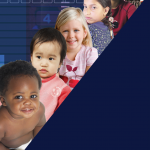
Lead PI: Letitia Naigles
Title of Project: UConn KIDS Community Activities & Outreach
UConn KIDS (Kids in Developmental Science) comprises a consortium of researchers who examine core aspects of typical and atypical child development, including cognition, language, and social relationships. Participating departments and programs include Cognitive Science, Educational Psychology, Human Development and Family Studies, Linguistics, Psychological Sciences, Speech, Language, and Hearing Sciences, and the Rudd Center. Funding from the Connecticut IBACS helps to support the activities of our Child Research Recruitment Coordinator and the infrastructure of our on-line participant database.

